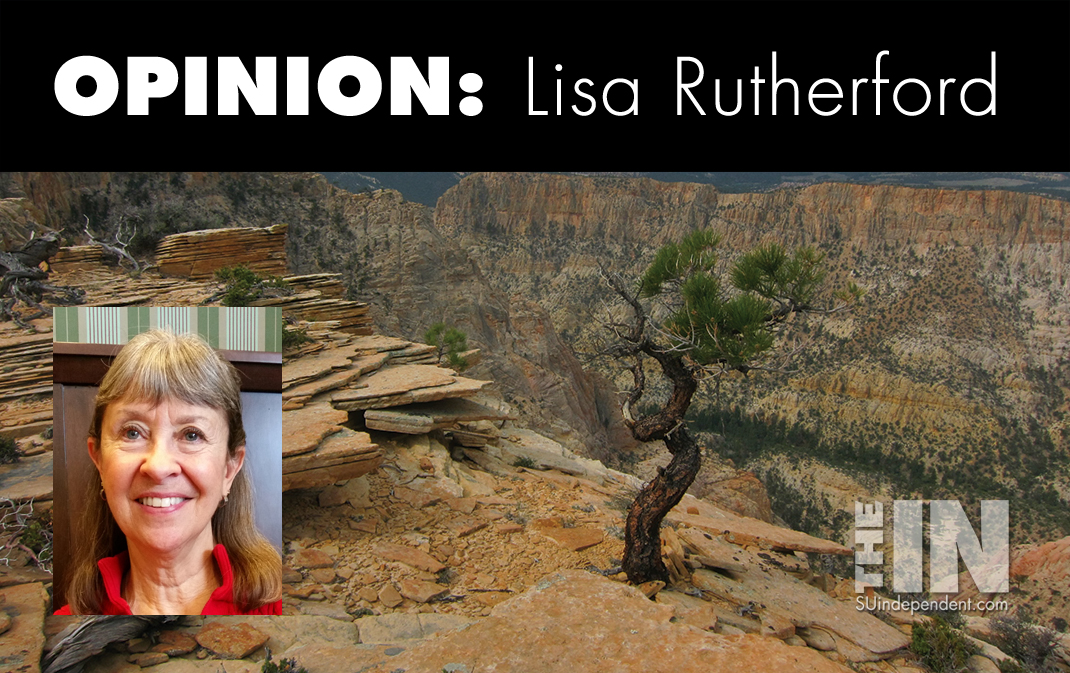
Public Land is a True Blessing
By Lisa Rutherford
This is the time of year when we give thanks for the blessings we have more than any other time. Now, most, perhaps many, are merely focused on material goods and the mad dash to secure the bounty of gifts that have come to represent Christmas. But we are blessed here by far more than what can be bought online or in local stores.
The beauty and the size of Washington County drew my husband, Alan, now deceased, and me here. We cared little about the shopping or number of restaurants. It was the openness and beauty that fed our souls and beckoned us to explore. Those were the blessings that we relished and which I still do. Washington County’s population is currently around 180,000, and growth is rampant, although perhaps not as overwhelming as in the mid-2000s but close.
I certainly don’t need to quote John Muir —a founder of the Sierra Club—but feel compelled. “In every walk with nature, one receives far more than he seeks.” So true! I have spent much time exploring Utah’s public lands and am always blown away by the beauty and vastness. There’s harshness, too; yet it is fragile, and many would overrun what I and many consider a blessing if given license to do so.
Gifford Pinchot – American forester and politician – stated, “Unless we practice conservation, those who come after us will have to pay the price of misery, degradation, and failure for the progress and prosperity of our day.” Although his focus was on forests, his vision can be applied to any area where forces bent on monetizing the area are at work. That certainly applies to Utah in general and our area, Washington County, specifically. What price will future residents pay for bad decisions now? Perhaps they will not know what has been lost, but those of us who have experienced it will know and will feel the sting of the loss and feel sorrow for those who never experienced this blessing.
Many officials in our county and throughout this state complain about the amount of public land in Utah. One of their biggest complaints is about the land being “tied up” and unavailable for other uses—mostly extraction activities and growth.
To quote another huge figure in the conservation arena, Aldo Leopold, “We abuse land because we regard it as a commodity belonging to us. When we see land as a community to which we belong, we may begin to use it with love and respect.”
Perhaps there will be many who continue to see our public lands as a mere commodity to be squandered for dollars rather than the true blessing it is, but for those who have true vision, these are lands worthy of our respect and preservation for those who follow.
The vast expanses provided by our state’s public lands provide more than just stunning vistas. At my age, I may never get out again to take long hikes in challenging, difficult to access and mysterious areas, but just knowing they are there—knowing that areas, where the old ones walked and toiled, are not being razed and gutted—makes my soul soar with delight.
We should heed John Muir’s statement about our receiving more blessings from nature than we seek. Here in Washington County, we are blessed to be able to walk just outside the bustling city of St. George and be greeted with the delights of an area that has been and should continue to be preserved, Red Cliffs National Conservation Area, where citizens and visitors alike can refresh themselves and commune with nature.
What value do you place on that? Those who see a piece of land and consider what economic value it might provide if developed should consider the value that land has otherwise. Nature has provided humanity with what is needed since humans first walked this planet. Perhaps what is needed now more than ever are places that help maintain mental health so that humans can revive themselves and return from that natural experience to be useful, productive members of our burgeoning society. Therein lay both the economic value of public land and the human value or blessing that can never be measured in dollars and cents.
We ourselves are at risk if we do not protect these special lands. Scientists have yet to determine if life is possible on other planets. Best we take care of the only one we have.




Amen.